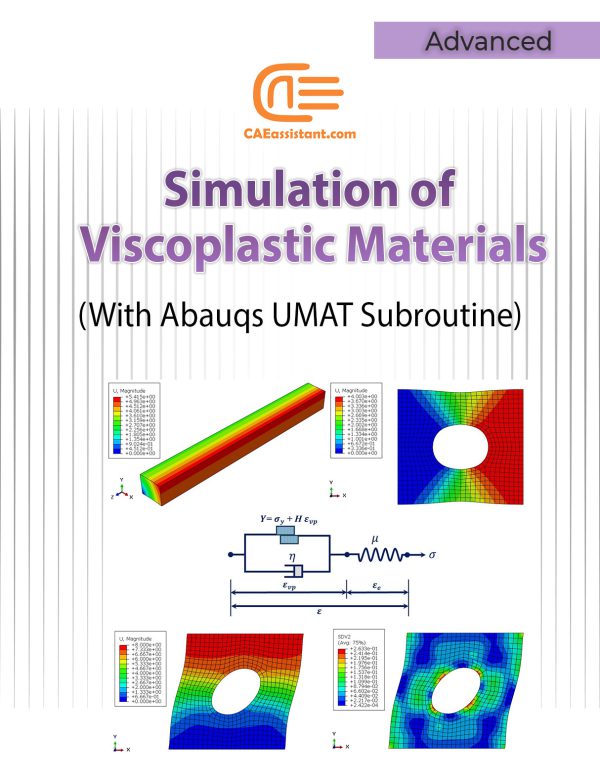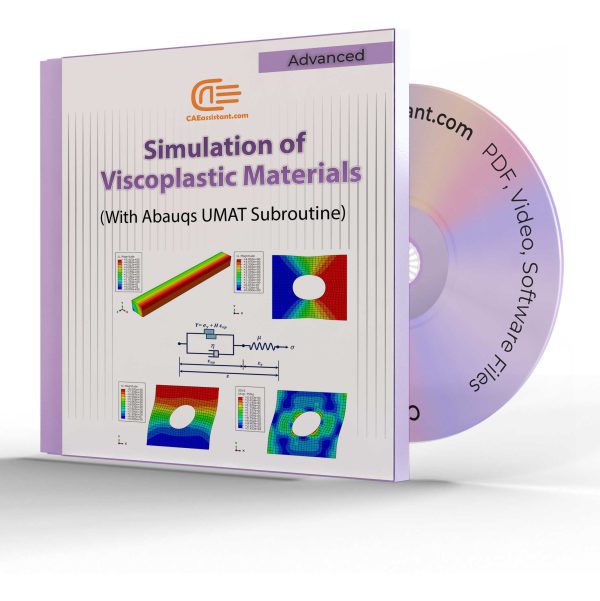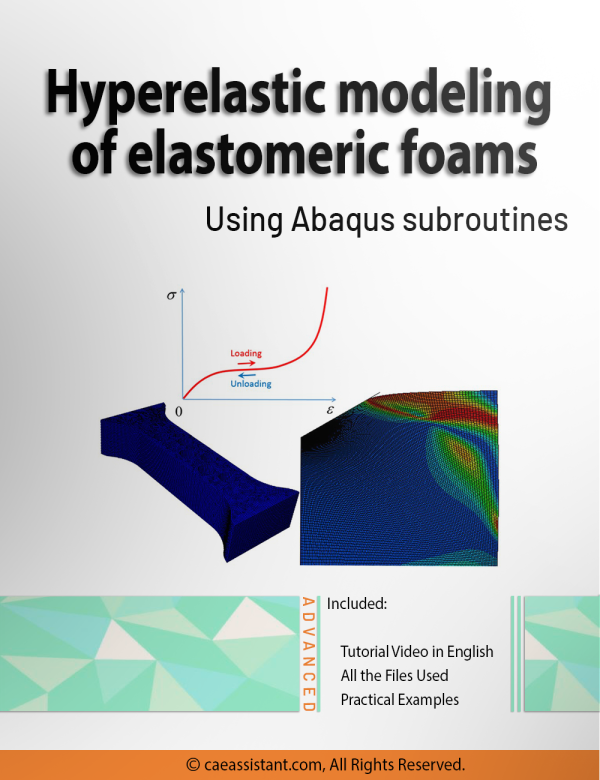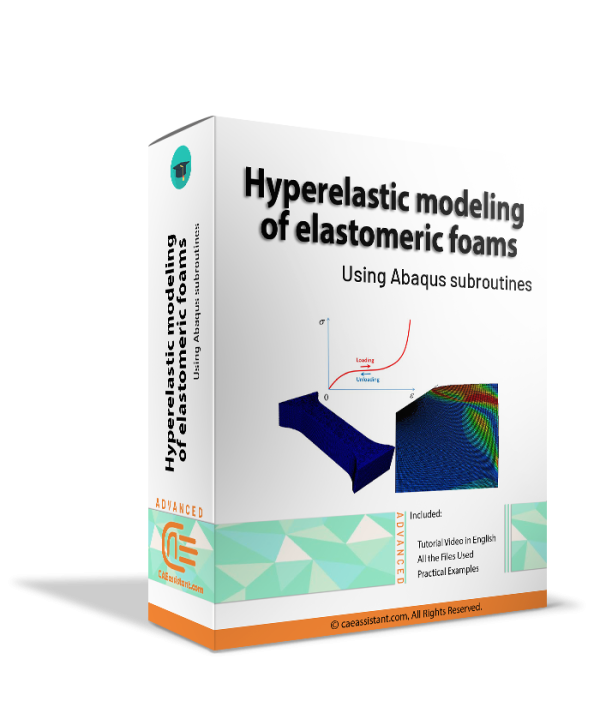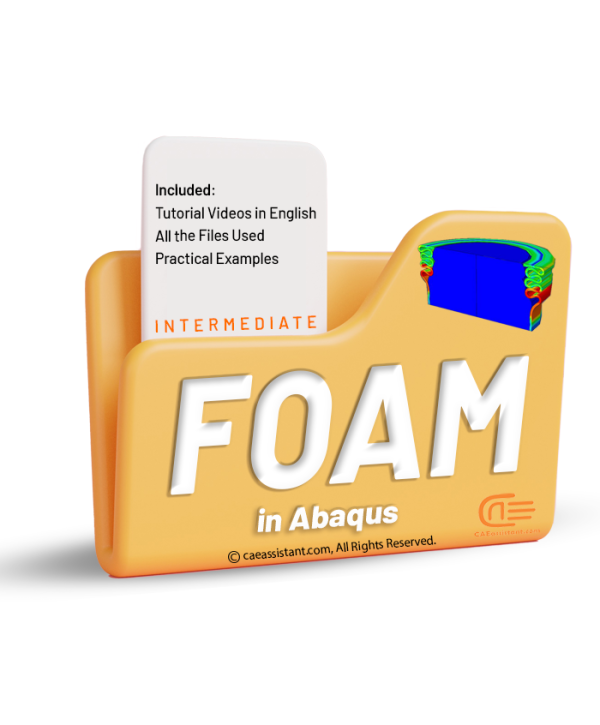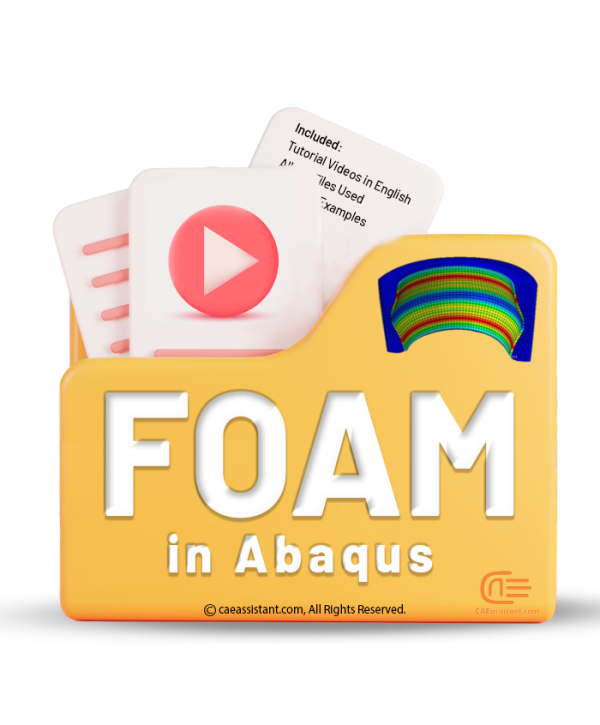Hyperelasticity
Viscoplasticity Abaqus Simulation Using UMAT Subroutine | Perzyna Viscoplastic Model
Viscoplasticity is a continuum mechanics theory that describes the behavior of time-dependent, inelastic strains solids, especially metals, polymers, and elastomers. That is to say, the viscoplasticity theory provides the most precise material model for estimating the mechanical behavior of polymers. This tutorial presents the accurate 2-3D mechanical responses of viscoplastic materials using the Perzyna viscoplastic model. To clarify, we implement the Perzyna model of viscoplasticity using the UMAT Abaqus subroutine. In addition, using the concepts in this tutorial, you can implement the other viscoplastic rheological models. In this regard, the primary goals of this study include the development and implementation of the precise 2-3D models of viscoplastic materials, which can improve the prediction of viscoplasticity response. By customizing the UMAT subroutine to simulate sample behavior, the tutorial contributes to the advancement of viscoplasticity design and analysis. In other words, it helps you with viscoplasticity simulations in Abaqus, with a specific focus on the development of the Abaqus Perzyna UMAT model.
Elastomeric Foam Simulation Using Abaqus Subroutines
This study focuses on modeling the mechanical behavior of open-cell, isotropic elastomeric foams. It is essential for applications in materials science and engineering. The project offers insights into designing customized elastomeric foam materials tailored for impact protection in automotive, sports equipment, and aerospace industries. Numerical simulations, using software like Abaqus, enable the prediction of complex behaviors such as hyperelasticity and viscoelasticity under various loading conditions. This finite element analysis of elastomers includes theoretical formulations for hyperelastic constitutive models based on logarithmic strain invariants, crucial for accurately describing large deformations. Practical benefits include the implementation of user-material subroutines in Abaqus, facilitating future extensions to incorporate strain-rate sensitivity, and microstructural defects analysis. This comprehensive approach equips learners with theoretical knowledge and practical tools to advance elastomeric foam simulation. Moreover, it enhances their capability to innovate and optimize materials for diverse applications.
Foam simulation in Abaqus
Foam is a type of expanded plastic and rubber produced by forcing gas bubbles into a polymer material. It is a permeating, lightweight material. Along with corrugated packaging, foam fabric can protect goods during transportation. Foams, a novel family of ultra-light materials, have the capacity to undergo significant deformation at practically constant plateau stress, which allows them to absorb a significant amount of kinetic energy. In this tutorial package, you will learn how to analyze sandwich panels with an interior layer of foam, Foam-Filled Aluminum Tubes subjected to compressive loads, simulation of a reinforced foamed concrete beam, concrete-titanium foam panel explosion, etc. All of these cool practical examples with their complete tutorial videos are in this package which you can read their description below.
